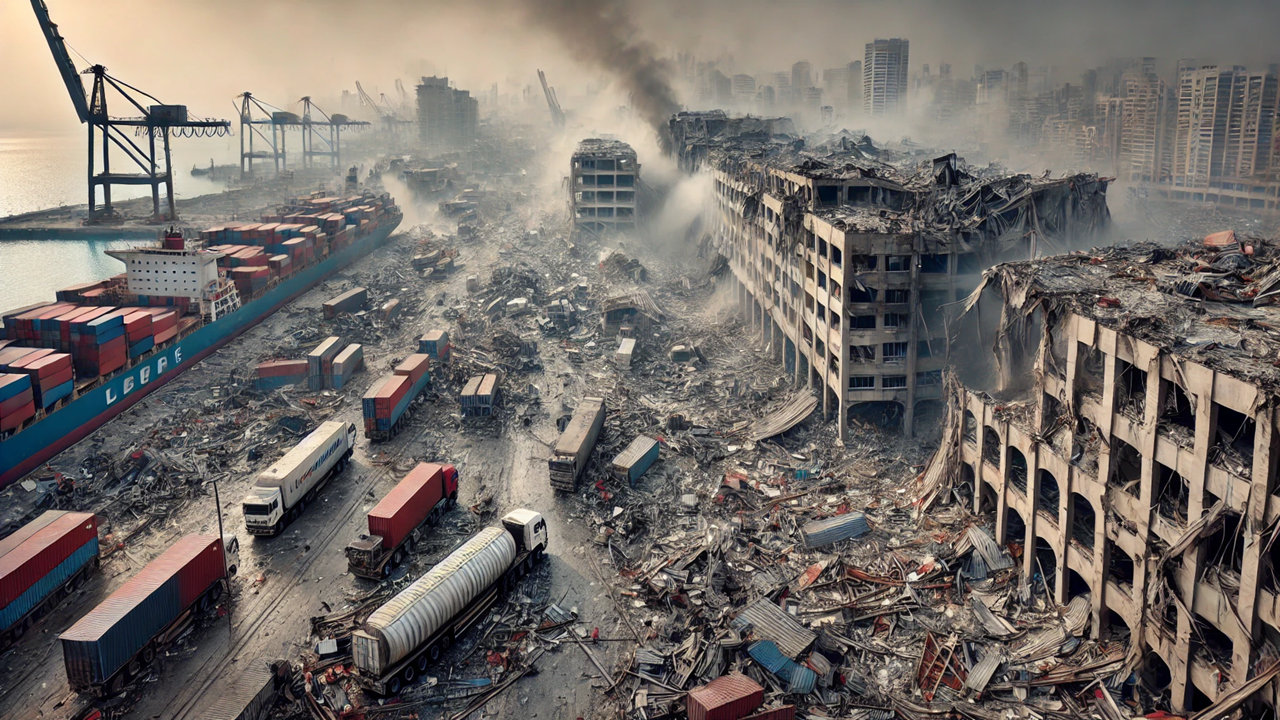Rising from the Rubble: Lebanon's Path to Recovery and Reform
In August 2020, a devastating explosion at the Port of Beirut intensified Lebanon's existing socioeconomic crisis. In response, the European Union, United Nations, and World Bank launched the Reform, Recovery, and Reconstruction Framework (3RF) to aid in Beirut's recovery and promote national reforms. Despite strong support, the 3RF faced significant challenges, including political obstacles and funding shortfalls. Key lessons emphasize the need for immediate long-term recovery planning, consistent international messaging, and practical support for civil society to drive meaningful change.

In August 2020, a catastrophic explosion rocked the Port of Beirut, leaving the city in ruins and exacerbating an already dire socioeconomic crisis in Lebanon. The blast claimed 218 lives, injured thousands, and displaced over 300,000 people. Against this backdrop of devastation, Lebanon faced the monumental task of recovery and rebuilding. Enter the Reform, Recovery, and Reconstruction Framework (3RF), a collaborative initiative by the European Union (EU), the United Nations (UN), and the World Bank. This framework, detailed in the report "Lessons from Disaster Governance: Port of Beirut Explosion Reform Recovery and Reconstruction Framework," aims to facilitate Lebanon's recovery and promote essential reforms to address the country's deep-seated fragility.
A Holistic Vision for Recovery
The 3RF was designed with a dual focus: the immediate recovery of Beirut and the long-term national reforms necessary to tackle the root causes of Lebanon's fragility. The framework sought to create a comprehensive governance structure that would support recovery efforts while advancing critical reforms. It received strong support from the EU, UN, and World Bank, along with various donors. The 3RF involved various stakeholders, including civil society and the private sector, enhancing legitimacy and accountability. Increased engagement with international partners and civil society gradually built trust and facilitated collaboration on reforms.
Despite the ambitious vision, the 3RF faced significant challenges. The framework struggled to make meaningful political progress and enact substantial reforms. Initially, there was confusion about the relationship between the 3RF and other aid frameworks, which was later resolved through consultations.
Overcoming Challenges and Coordinating Efforts
Lebanon's financial and socioeconomic crisis, exacerbated by the influx of Syrian refugees and the COVID-19 pandemic, had already pushed the country to the brink. The Beirut explosion highlighted severe issues in governance and decision-making paralysis. The state lacked a comprehensive disaster risk management system, heavily relying on non-state organizations for response and recovery. Previous international reform efforts had failed to bring significant change, with little incentive for the political elite to pursue reforms.
The 3RF was established as a multistakeholder governance structure to support Beirut's recovery and promote long-term national reforms. It pursued two tracks: a people-centered recovery track and a reform and reconstruction track, engaging both state institutions and civil society. Initial results included core investment projects and coordination mechanisms to support recovery and reform. Strong engagement from international partners helped define ambitious strategic objectives. However, translating strategic decisions into actionable results proved challenging. Organizing working groups to advise on 3RF priorities helped, but there were significant delays and obstacles.
Lessons and the Path Forward
Engaging the government was crucial for advancing the reform agenda. Initial resistance and capacity limitations were significant hurdles, but the appointment of a more reform-oriented government improved engagement. Civil society organizations played a key role in the recovery process. However, limited funding and communication hampered their engagement. The Lebanon Financing Facility (LFF) faced funding shortfalls, impacting the implementation of prioritized projects. Implementation of the results framework was initially slow, but efforts were made to improve monitoring and accountability.
Lessons learned from the 3RF highlight several critical points. Immediate preparation for longer-term reconstruction is crucial to maintain momentum after a disaster. Consistent and disciplined messaging by international actors is essential to achieve reforms. Ensuring alignment with existing aid frameworks can avoid redundancy and delays. The government must be visibly engaged in the reform and reconstruction process. Providing practical support to civil society can enhance their engagement and effectiveness in the recovery process.
The 3RF presents a comprehensive case study on developing post-disaster recovery governance structures in fragile, conflict-affected, and violence-prone settings. Lebanon's experience illustrates the complexities and challenges of such efforts but also highlights the potential for innovative frameworks to drive meaningful change.
- READ MORE ON:
- Lebanon
- Beirut Explosion
- 3RF
- Recovery
- Reform
- Governance
- International Aid
- FIRST PUBLISHED IN:
- Devdiscourse
ALSO READ
Umran Malik Rejoins NCA, Sets Sights on Duleep Trophy After Dengue Recovery
Dr. Anthony Fauci on Road to Recovery After West Nile Virus Hospitalization
HS Prannoy Announces Break from Badminton Due to Chikungunya Recovery
Swift Recovery: Social Media Platform X Restores Service After Brief Outage
PAWsitive Recovery: Pets at the Heart of Addiction Recovery










